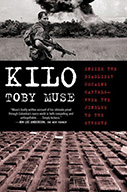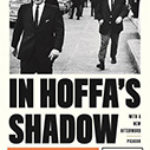Kilo: Inside the Deadliest Cocaine Cartels—From the Jungles to the Streets

Author: Toby Muse
Publisher: Harper Collins, 2020. 320 pages
Reviewer: Gabriel Ferreyra ǀ November 2021
Toby Muse presents in Kilo a detailed and rich account of the inner workings of how cocaine is produced, packed, transported, and smuggled out of Colombia, including the economic, social, political, and environmental costs that cocaine trafficking has in that country and its people. The title Kilo refers to the short slang name given to the kilogram of cocaine that is tightly packed into a brick-like shaped block for easier handling and smuggling to the most profitable markets. Muse’ account is based on a combination of research approaches including investigative journalism, participant observation, and interviews with key informants, including some of the very people who are part of the cocaine trade. The book has thirteen chapters and an epilogue; they are written in a chronological timeline beginning with the harvesting of coca leaves (the raw material of cocaine) and ending with interdiction efforts by the U.S. Coast Guard along the busiest maritime cocaine trafficking corridor in the Pacific Ocean, off the shores of Costa Rica, Ecuador, and Colombia.
To provide a contextualization, Muse begins with a prologue to describe the Colombian peace process that took place around 2016, between the oldest guerrilla group in the world known as the FARC (Revolutionary Armed Forces of Colombia) and the Colombian government, to demobilize the former and end the conflict. This leftist group had been mostly bankrolled by the cocaine industry, and the deal between the government and the guerrillas was meant to bring a long-awaited peace, but also to deal with the cocaine problem. Muse explains that the treaty was celebrated with fanfare by everyone involved. However, everything turned upside down after the guerrillas laid down their weapons and exited the jungle and fields of coca leaves. The FARC’s exit left a vacuum, and the government ignored its promise to help farmers with crop substitution and the patrolling of former coca fields. As a result, narco-militias and ex-paramilitary members filled the void by seizing the territory once controlled by the guerrillas, unfolding a cycle of bloodshed that persists today.
With this background, Kilo moves to depict the early journey of the cocaine trade with the seeding and harvesting of coca leaves in rural areas of Colombia’s mountains and jungles near the border with Venezuela. There, the harsh reality of poverty explains why these activities are a way of life — severe destitution, unemployment, underdevelopment, little or no infrastructure, and a lack of basic social and health care services. All of this creates a context where raspachines (coca pickers) resort to coca harvesting as a survival strategy, but certainly not to be rich. These are the only jobs available, and the option is either “work or starve” as Muse asserts. An interesting fact mentioned by the author is that most, if not all current coca pickers, are Venezuelans rather than Colombians as was the case in the past. The dire crisis in this neighboring country has led many of its people to venture to Colombia to get a job in the coca production that offers at least some income, compared to the extreme poverty that afflicts Venezuela nowadays.
Importantly, Kilo highlights the multifaceted nature of cocaine production in Colombia, including guerrilla war, violence, extreme inequality (most land is monopolized by a few rich Colombian families), systemic corruption, and abandonment by the central government. Even worse is the vicious cycle where coca farmers are in fact part of the country’s economic engine — if they were to switch to legal crops, the government would not be able to afford paying for education, health care, and other services. Therefore, there is an unspoken official incentive to maintain the status quo, which of course would never be admitted to by the authorities, according to the author.
The book moves in a chronological fashion to explain that once harvested, coca leaves are taken to a makeshift laboratory to transform them into coca paste. Using gasoline, ammonia, cement, lime powder and other chemicals, workers produce this substance in a rustic process at dozens of labs in the jungle. It takes around one ton of coca leaves to produce a kilogram of coca paste. The paste is then packed in the famous one-kilogram bricks and brought to small towns such as La Gabarra, where narco-militias and former paramilitary members buy them to finalize the product that is sent to urban settings to be exported to consumers. One captivating element of Muse’s narrative is his versatility in depicting in detail the everyday life of the people involved in or impacted by this reality. For instance, many coca pickers routinely come to these small towns after they are paid to get drunk and visit brothels, which in turn has meant luring many sex workers to these regions to try to make a living, also out of the coca trade. It is not difficult to grasp then why the cocaine industry is such a massive and crucial component of the underground economy in Colombia, as Muse convincingly argues.
Interspersed in this cocaine tale is the inevitable presence of interdiction efforts on different fronts. In one instance, Muse chronicles antinarcotics operations being launched from a militarized base in Tumaco city on Colombia’s Pacific coast. The job of officials in charge of coca eradication is really an agonizing one, because of the conditions under which they work: prone to be ambushed, widespread land mines, IEDs, bombs, thick jungle, complex mountain topography, and being easy targets for guerrilla attacks. These antinarcotics police are dropped off from Black Hawk helicopters in the middle of coca fields to perform coca eradication manually (aerial fumigations are prohibited), and they must get out of there as fast as possible. Ironically, these law enforcement measures do not make a dent in the cocaine industry, and the author categories them as Sisyphean efforts because of how meaningless and absurd they are.
The cocaine industry is a labor-intensive business that runs in cycles with no beginning or end, Muse says. This means that labs, drug corridors, antinarcotics operations, and traffickers come and go quickly, and the cycle of trafficking persists relentlessly. Once the narco-militias turn coca paste into cocaine hydrochloride, it leaves the jungles and moves to cities and ports where traffickers buy it. Medellin is one of those Colombian cities where the cocaine industry has had a powerful grip for decades, and Muse provides an elaborate depiction of ‘Combos’ (neighborhoods or territories), located in the slums of the city, that are controlled by young low-level traffickers who extort people and businesses and sell drugs. Young hit men (sicarios) who are part of the cocaine ecosystem, are the enforcers in these places, using threats, violence, and murder to exert absolute control in the Combos. The author introduces Bryan and Cachote, the leader of one such group and a young sicario respectively, to present an intimate but grisly description of the inner workings of how Combos are managed, along with the social and economic hardships of the people living there. All of this is fertile soil for drug trafficking to flourish, and in many ways, it resembles the misery of the coca farmers in the jungles of Colombia, because the causes and context of these issues are similar.
Perhaps the most well-known face of drug trafficking is that of the narcos, now famous and ubiquitous due to the mass media attention through movies, TV series, and high-profile criminal cases. The author introduces Alex, an upper level narco, who is the epitome of the glamorized trafficker nowadays. He belongs to a new generation of traffickers known as the ‘invisibles’ who differentiate themselves from their predecessors (who tended to be pretentious, arrogant, and loved flaunting their wealth) by blending in as successful businessmen, and always keeping a low profile. Muse outlines the pragmatic mindset of this character aware that in the cocaine business, life is short, therefore they live fast and indulge in the things that money can buy: sex, drugs, glamour, and any other expensive and desired object.
The final four chapters of the book shed light on the different interdiction efforts to stop and seize cocaine from being exported to profitable markets. Whether at the largest airport in Colombia (El Dorado) or on its ocean beaches, the ingenuity of traffickers in smuggling is stunning. Their strategies include: human mules (with drugs hidden in body cavities), shipping containers, small submarine like boats, or just mixed with a host of commodities. The author recounts his experience riding the Coast Guard cutter James, charged with cocaine interdiction, to learn how the war on drugs is fought in this particular arena. It is enlightening to get a peek at the work done by the men and women of the U.S. Coast Guard, and how they intercept cocaine shipments. What stands out from this and other law enforcement operations in the war on drugs is the endless flow of cocaine being smuggled out of Colombia, and how futile these efforts are because no matter how much coca is intercepted, most of it is still getting through. One cannot but conclude that this is just a cat-and-mouse game, with pyrrhic victories for either side now and then, and knowing that nothing will seemingly change this status quo.
Muse’ book is a must-read to understand the context and the complexity of cocaine production in Colombia, and it adds yet another powerful argument about why the war on drugs should have ended long ago. The book, however, misses the opportunity to include crucial aspects of the cocaine industry that need to be told in order to have a more complete account of the story. For example, Muse correctly asserts that corruption in Colombia remarkably facilitates cocaine trafficking, but his narrative makes it look as if the Colombian people are the only ones engaging in this phenomenon. In particular, there is no mention of how drug trafficking corruption has indeed lured DEA agents and negatively impacted the Colombian DEA office for decades. To that end, there is plenty of documented evidence from the Office of the Inspector General (OIG), investigative journalism, and other local accounts of how many DEA agents operating in Colombia have been co-opted, corrupted, and engaged in cozy and unethical relationships with traffickers and informants. Just to name one, in 2015 a report by the OIG found that at least 10 DEA agents working in Colombia had sex parties with prostitutes paid by traffickers. None of this information, or other crucial information on American wrongdoing, is discussed by Muse. This reinforces the false narrative that corruption only happens in Latin America, and not in the U.S.
The book does not address the fact that it is drug demand and cocaine consumption in America that is a powerful engine of drug trafficking. What Kilo depicts in Colombia is just half the story of cocaine, because its illegal trade cannot be fully understood without including the chronicle of cocaine use and abuse in developed countries (especially the United States, the largest consumer of illegal drugs by volume), and how that fuels cocaine trafficking. Although Muse’s account recognizes the co-responsibility of the U.S. in the cocaine industry, it would have been more informative to detail the fundamentals of that co-responsibility and its mechanisms in a more elaborated manner.
Any shortcomings do not compromise the integrity and rigorous account of Muse’s book that certainly contributes to understanding the context and impact of the cocaine industry and the high price that Colombia and its people pay for a highly sought-after and addictive narcotic that seems here to stay. This book should be read by all members of the war on drug’s establishment in the U.S. so as to understand the tragic consequences of supporting an outdated drug policy.
Gabriel Ferreyra, PhD, California State University, Los Angeles


